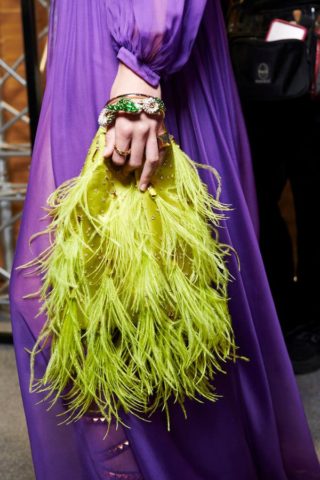
ON AUGUST 21ST “House of the Dragon”, the first spin-off from “Game of Thrones”, will have its premiere in America on hbo; it will be released in Britain the following day. To viewers, the prequel tells a tale of civil war and familial betrayal, of conquest, decline and succession. To Hollywood executives and Wall Street investors, the show is part of a story about corporate regimes and the importance of intellectual property.
Throughout its run, “Game of Thrones” was the undisputed ruler of television. Across eight seasons, released between 2011 and 2019, the series accumulated more Emmy wins than any other drama in history. The final season averaged 46m American viewers per episode and, according to Parrot Analytics, a data-science firm, it has remained one of the two most in-demand series globally in the three years since its conclusion. Unsurprisingly, other broadcasters and distributors have sought to replicate this success. Yet despite many efforts in the fantasy or sci-fi genre—including “The Witcher” (Netflix), “Foundation” (Apple TV+) and “The Shannara Chronicles” (MTV)—none has so far reached the heights achieved by “Game of Thrones”. Amazon will be hoping “The Rings of Power”, a lavish prequel series to “The Lord of the Rings” released in September, might prevail where others have failed.
Even HBO has found it challenging to follow up on its own smash hit. In 2017 the network announced that four spin-offs from “Game of Thrones” were in development, the first of which was greenlit a year later. But after shooting the pilot episode, at an estimated cost of between $30m and $35m, an industry record, HBO chose not to move forward. This was a tough loss for AT&T, which had recently acquired HBO’s parent company, Time Warner, and hoped to transform HBO into a global streaming competitor to Netflix and Disney+.
The network understands the importance of getting its first spin-off title right, given the lingering disappointment over the finale of “Game of Thrones”. On imdb the show is still rated the 13th-best of all time, with a 9.2 average rating. Yet the final season averages a lowly 6.4, with its finale given a dire 4.1. George R.R. Martin, the author of the books on which the show is based, has also distanced himself from the later seasons of the series. This month he told the New York Times that, early on, he was intimately involved in writing and reviewing scripts as well as casting, but over the last four seasons, he “was pretty much out of the loop” and didn’t know why. Mr Martin, who has yet to finish the book series, also stressed that his “ending will be very different” to that of the TV adaptation.
At least in its first season, “House of the Dragon” will put many doubts to rest—including those of Discovery, the third company to own HBO since work on the prequel began five years ago. The series stars Matt Smith, who previously played an incarnation of Doctor Who; Paddy Considine of “Peaky Blinders”; and Emma D’Arcy (“Wanderlust”). It is set 200 years before the events of “Game of Thrones”, at a time when the Targaryen dynasty rules over the Seven Kingdoms of Westeros with the help of ten fully grown and battle-trained dragons. The inability of King Viserys I (Mr Considine) to produce a male heir sets off a war of succession, with his daughter, Princess Rhaenyra Targaryen (Ms D’Arcy), named queen-to-be to the dissatisfaction of Viserys’s brother, Prince Daemon Targaryen (Mr Smith).

The show is expertly made. Although David Benioff and D.B. Weiss, the showrunners of “Game of Thrones”, are not involved, audiences will find it familiar in tone and style. Mr Martin and Ramin Djawadi, the composer of the scores for “Game of Thrones”, as well as the show’s most notable director, Miguel Sapochnik, are all involved. The nudity and orgies remain.
By contrast with its predecessor, however, “House of the Dragon” is more interested in exploring a woman’s right to the throne and less interested in sexual violence, which the show’s producers say will occur off-screen. The cast is more diverse than its predecessor, too, with several non-white actors taking on roles that were written as white characters in Mr Martin’s text. (Such changes were uncommon in “Game of Thrones”.)
The nature of the conflict is also more intimate. Many of the political players in “Game of Thrones” did not meet until the final episodes; all of the opponents in “House of the Dragon” are well-acquainted and often part of the same family. The number of dragons in this show—“Game of Thrones” had three—means there’s still plenty of opportunity for spectacle and pyrotechnics.
If “House of the Dragon” has a shortcoming, it is that the stakes of the drama are somewhat low. Fans already know the outcome of the Targaryen War of Succession or at least the fact that, 170 years later, only three descendants of this once-great dynasty remain. (The series explains this dramatic decline.) Viewers also know that no matter what occurs in “House of the Dragon”, it is of less importance than the cataclysmic contest in “Game of Thrones”—a point the new show somewhat clumsily acknowledges.
Though it might be more interesting to watch a spin-off set millennia earlier, or to follow the drama in the unknown regions of the world, hbo has shown that it is still able to produce epic fantasy. To the delight of the shareholders of the newly formed Warner Bros Discovery, as well as audiences around the world, more series are coming.
“House of the Dragon” will be released on HBO in America and on Sky in Britain
By The Economist




